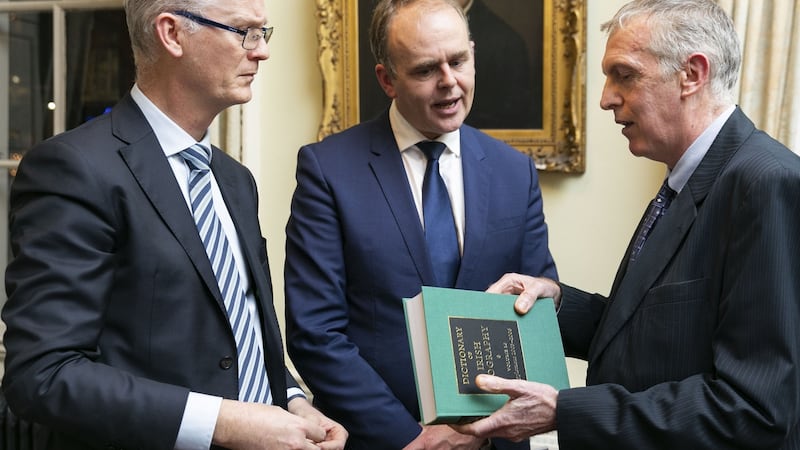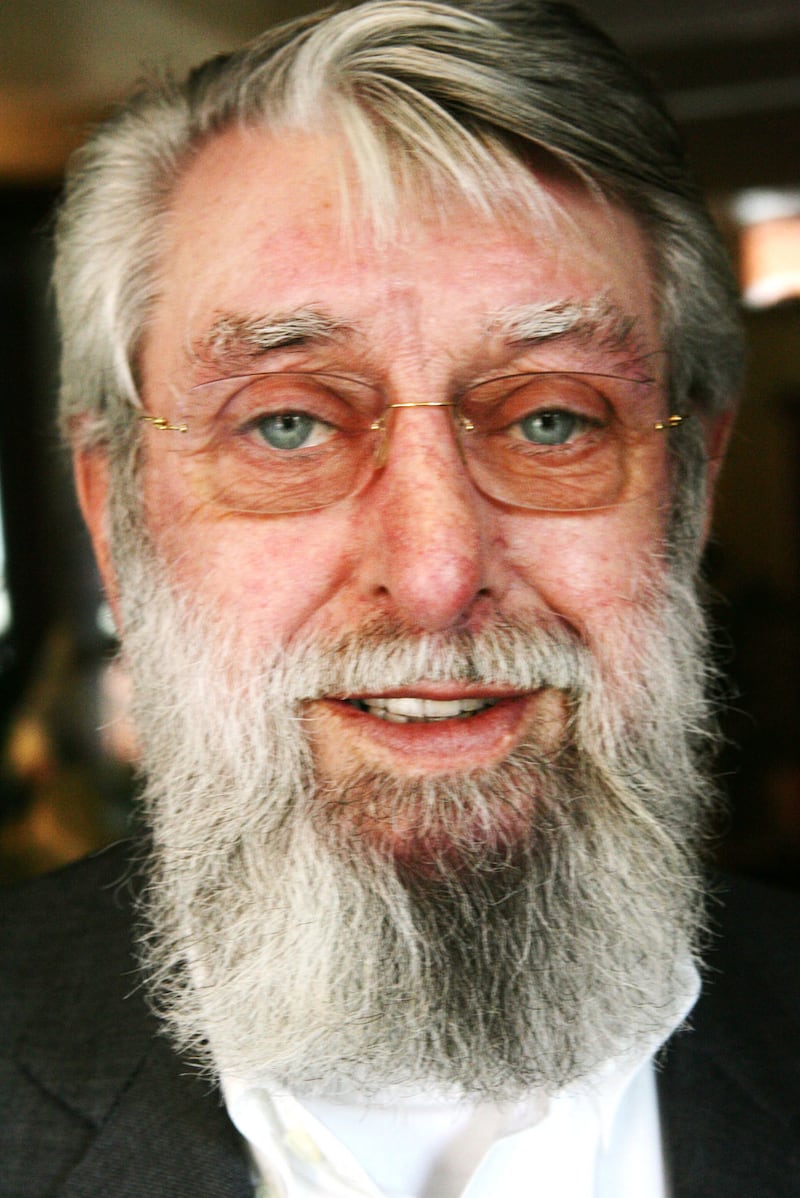The Royal Irish Academy recently marked the 10th anniversary of the publication of the most comprehensive and authoritative biographical dictionary published for Ireland, the Dictionary of Irish Biography (DIB).
Devised, researched, written and edited under the auspices of the Royal Irish Academy, the DIB was first published in an online edition and in a nine-volume print edition in late 2009, and contained 9,014 signed biographical articles of subjects who died prior to 2003. The online version is available to subscribers at dib.cambridge.org and is freely available in most libraries. An educational resource of huge potential, it is also freely available to use in schools via Scoilnet.
Since 2009 the DIB has published online updates every six months with online revisions and corrections also being performed biannually with each batch comprising roughly 40 new biographies, published at least five years after the subject’s death.
Inevitably, despite the breadth of coverage of the first nine volumes, some interesting and important figures were omitted, so there are regular “missing persons” batches comprising 60-80 new biographies of individuals overlooked in the original DIB. Last year the print volumes 10 and 11 were published, comprising over 600 subjects who died between 2003 and 2010, and 157 missing persons.
The DIB has published 279 missing persons as well as 625 biographies of subjects who died during 2003-13. Notable recent biographies include Charles Haughey, Seamus Heaney, Maeve Binchy, John McGahern, George Best, Maureen Potter, Gerry Ryan, Liam Clancy, Ronnie Drew, Joe Dolan, Mary Raftery and Conor Cruise O’Brien. The 2020 batches will include biographies of Garret FitzGerald, Ian Paisley, Albert Reynolds, Christine Buckley, Lillian Barry and Jackie Healy-Rae.

Dealing with the recently dead poses challenges and opportunities. Although relations, friends and colleagues will still be alive and can be interviewed, primary sources may not be readily available and there is often a lack of secondary sources to guide and inform research. Yet this makes our biographies more valuable to readers because we are effectively pioneering new research rather than collating existing scholarship.
Most of our new subjects still come from the fields of politics, administration, literature, religion, art, architecture, science, scholarship, medicine and law, but there have been increases in subjects involved in sport, journalism, broadcasting, business, social work, the performing arts and popular entertainment generally.
The rising proportion of female subjects has been a noteworthy and welcome development. In the original nine-volume DIB, women were about 10 per cent of subjects, which reflected the lack of opportunity for women in Irish society until relatively recently. This proportion has more than doubled among the DIB’s post-2009 publications and will continue to rise in future. More women are also being included in the missing persons batches due to the continuing growth in scholarship on women’s history.
Subjects eligible for inclusion in the DIB must be dead and must either be born in Ireland (north and south) or have a noteworthy career within Ireland. When dealing with subjects born outside Ireland, the entry focuses on the Irish career even if they have important non-Irish careers.
The holders of high office such as government ministers, archbishops, judges and chief executives are strongly considered, though holding an important office by itself has not been regarded as sufficient to merit inclusion. The famous and notorious are included, as do those who have achieved high recognition in their fields, despite being little known to the general public. Innovators, reformers and pioneers also feature prominently.
As far as possible DIB entries contain comprehensive factual information: details of birth and death, family, education, significant awards, distinctions and promotions. A list of the sources used is included at the end to guide those interested in further research.
DIB entries are more than mere catalogues of events but attempt to appraise the circumstances shaping an individual’s life such as formative influences and their physical and social environment. That said, for the purposes of brevity a certain amount of knowledge is assumed regarding well-known events or contexts (ie, the 1916 Rising, the Northern Ireland Troubles, Irish party politics, the influence of the Catholic Church). DIB articles are broadly chronological, though sometimes a thematic structure is necessary if a subject has parallel careers.
Articles range from 200 to 15,000 words, depending mainly on the importance of the subject, though the amount of information available, the length of career and the versatility of the subject are also considered. Thus, someone with a long, well-documented career in different fields will generally require more words.
The main editorial criteria are that each entry be factually accurate, based on the most recently available sources and accessible to the general reader. Otherwise contributors are encouraged to interpret a life in any way they find to be apposite and true. Most entries are researched and written in-house with some entries being assigned to unpaid external contributors. A DIB entry can take anywhere from a week to several months to research and write.

Typically, the subject’s appearance and speech are described. Larry White’s entry on Ronnie Drew (1934-2008) reveals that he “possessed one of the most distinctive and recognisable voices, whether singing or speaking, of any Irish entertainer: a deep, gravelly, raspy baritone……. With large, sunken, saucer-like eyes, a penetrating gaze, and a wide, sensual mouth, he had a perpetually melancholy, mournful expression”.
A sense of the subject’s personality and motivations is usually conveyed. Thus, Frank Callanan on Conor Cruise O’Brien (1917-2008): “He was endowed, and perhaps politically cursed, with an expressiveness beyond the human norm. He was not conversationally declamatory: always interested in the response to whatever case he was making, he urbanely drew out his interlocutor. He was unaffectedly curious.”
Quotes can be used to informative and diverting effect. Mark Duncan uses Kevin Heffernan’s (1929-2013) own words to illustrate his ruthless attitude towards team selection: “Look, I would drop my own mother if I thought she was not worth her place”.
Likewise with anecdotes, as when James Quinn tell us that before international rugby matches, Moss Keane (1948-2010) “would sometimes drink from a bottle of Lourdes water for protection; on one occasion he sprinkled some over his Ulster protestant teammates Mike Gibson and Willie John McBride, with the assurance that it would protect them too”.
Finally there will normally be an assessment of the individual’s career, especially if the subject is important. Patrick Maume’s entry on Charles Haughey (1925-2006) concludes by stating “Haughey was the defining Irish politician of the last third of the twentieth century, but not in the way he had intended; he embodied a process by which Irish society came to realise that, if it had great unrecognised potential, it was also darker, grubbier, more provincial and corrupt than it had previously acknowledged. If the unrealised hopes his followers placed in him had more substance than is often acknowledged, so had the unrealised fears of his opponents.”
In summing up Maeve Binchy’s (1939-2012) novels, Margaret Kelleher writes: “The view of the world from Maeve Binchy’s fiction includes a belief in human goodness and an unflinching look at what is less than good. Along with disappointment and disillusionment, rage or pain, her writings illustrate a reassuring belief in human resilience and recovery.”
Perhaps the most significant change that has occurred since the first publication of the DIB is the ready availability of historical material online. Potentially this makes readers less reliant on the DIB, even though information online can be erroneous, garbled and biased.
In response to this challenge the DIB now offers longer, more intensively researched biographical articles. We can do so thanks to the digitisation of the Irish newspaper archives. During the preparation of the original DIB there had not been enough time for researchers to trawl through the newspaper archives. But since then the ability to perform accurate word searches on the digital archives of nearly all the national and many of the local newspapers has made the Irish print media the most important source for our research.
Moreover, most of the careers of the post-2009 DIB entries fall within the final decades of the 20th century, a period when the Irish newspaper sector expanded the range and sophistication of its coverage. Irish newspapers have become a much richer and more useful source for historians.
The DIB is now entering a new phase. It is the RIA’s hope to make the dictionary fully and freely available online, a national resource that the general public can enjoy while also allowing students of history at all levels and ages to view it anywhere and anytime. A more dynamic online presence will allow the DIB team to repurpose some of the biographical entries into themed collections and resource packages that can support specific aspects of the school curriculum.
The late Seamus Heaney, when launching the hard copy volumes in 2009, said the project “presents us with is a resource of enormous importance, not only for professional students and scholars, but for every literate person on the island, it is an epoch-making event in the history of Irish scholarship”.
The next stage in the project’s history is to make this resource “open access” and available to all. Any why not? It provides us with a unique history of our island, not through the prism of events and potentially biased agendas, but through its people, warts and all.











